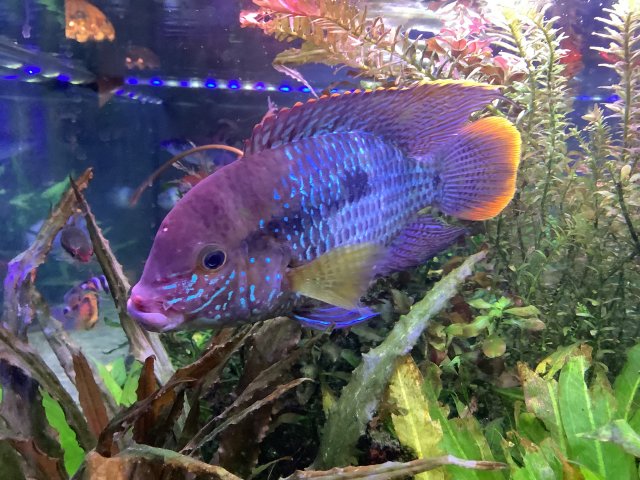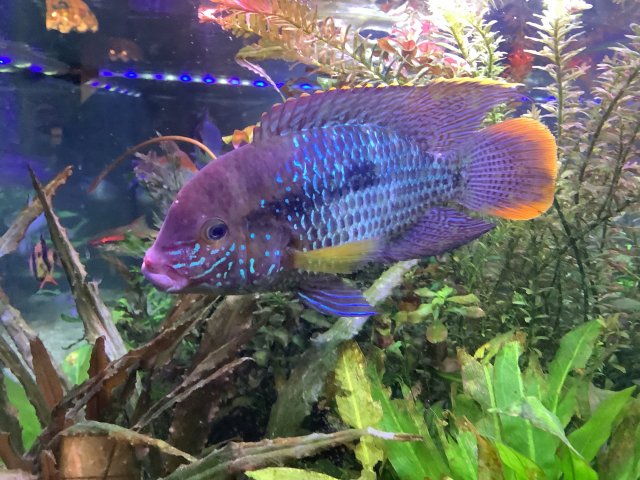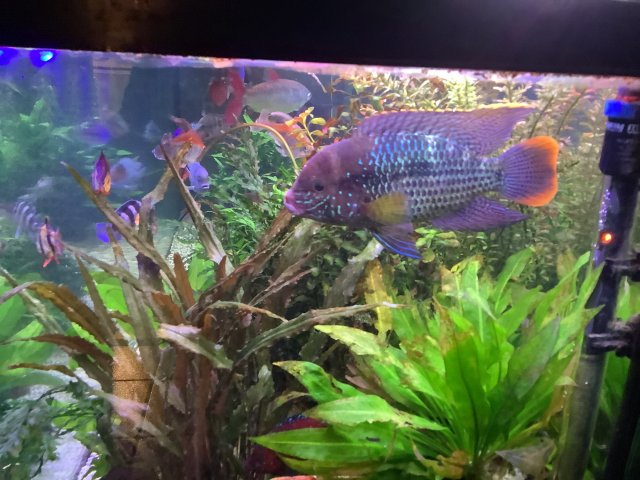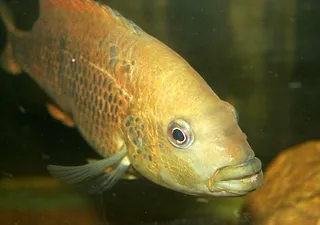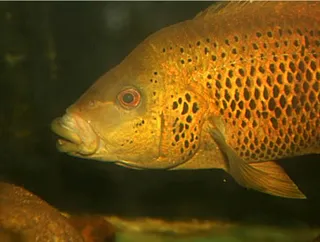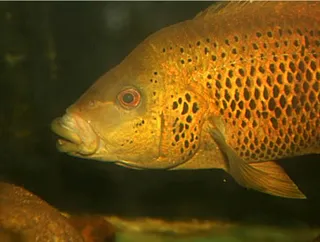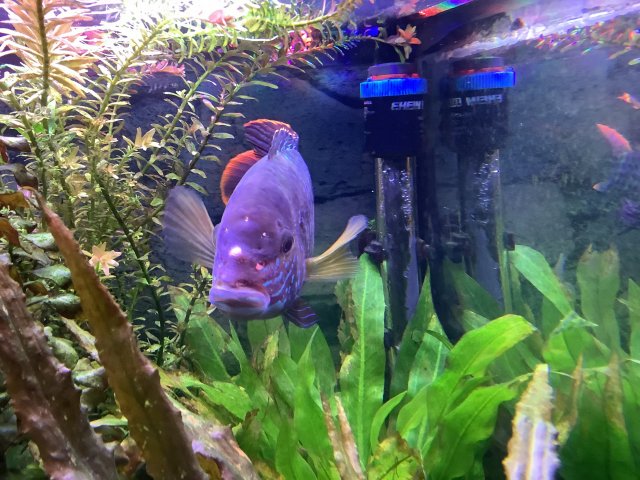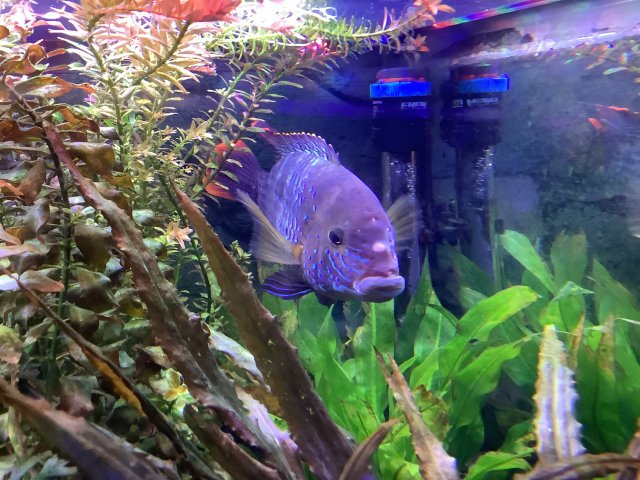- Have you tested your water?
- No
- If I did not test my water...
- ...I recognize that I will likely be asked to do a test, and that water tests are critical for solving freshwater health problems.
- Do you do water changes?
- Yes
- What percentage of water do you change?
- 71-80%
- How frequently do you change your water?
- Every week
- If I do not change my water...
- ...I recognize that I will likely be recommended to do a water change, and water changes are critical for preventing future freshwater health problems.
I raised this GT from juvie for about a year that turned into a gorgeous male. Unfortunately, it suddenly caught a systemic infection with the first sign of, appearance of a small white dot in the forehead, and gradual development of swollen lips. I know he will die in a week as I had lost GT with exact same symptoms previously. At the mean time , he still shows good color, and behaves normally except not eating. I’m not aware of any effective treatment, but, doesn't seem to be contagious, so I let him runs his course and took a few pics for memory.
